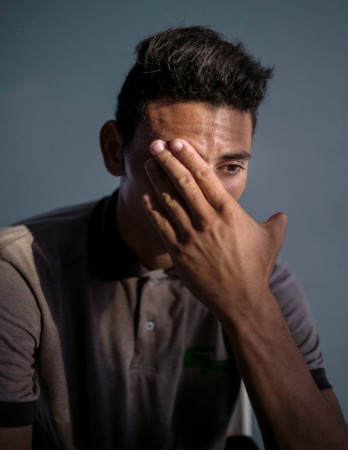
Jared Bloch, Senior Communications Officer, ILO Occupational Safety and Health
One of the most gratifying aspects of my job with the ILO in Geneva is getting to see how our work directly supports advocates for safe and healthy work conditions at national levels. Last month, I was in Latin America talking with young workers and employers about occupational safety and health (OSH) issues, in preparation for SafeDay 2018. This year, SafeDay is focused on improving workplace safety and health for young workers aged 15-24, who suffer a disproportionately high rate of on-the-job injuries. The visit provided a glimpse into the work of ILO partners devoted to ensuring labour rights and improving workers’ lives.
Justicia y Libertad (Justice and Liberty Solidarity Center) is an NGO working with the ILO, together with the Central Unitaria de Trabajadores de Colombia (Workers Union of Colombia) and affiliated palm worker unions, to promote collective bargaining and improve the health and welfare of workers in the Santander and Cesar Departments of Colombia. With a small staff and a handful of volunteers, Justicia y Libertad provides labour rights training and advocacy support for workers in the regions’ vast palm oil plantations. Protection of fundamental labour rights is a huge issue for young workers in a country where some 12 million 15-24 year olds are in vulnerable employment.

Agricultural workers have high rates of
occupational accident and disease globally. © Maxime Fossat / ILO
In San Alberto, I spoke with a number of young palm workers who told me about working under hazardous conditions without safety and health training, and without being provided necessary protective equipment. As contract workers, they have limited or no access to social security, must pay out of their own pocket the costs of medical care in the case of injury or illness, and are prohibited from conducting collective bargaining. At a union meeting in the town, I met Jorge, a young worker who lost his thumb while cutting palm branches with a machete. He recounted how the accident has impacted his self-esteem and his ability to earn a living – at a time when he is just beginning his working life.
Last month, a union representing outsourced workers in the region – Union General de Trabajadores Tercerizados de la Agroindustria (UGTTA) – achieved a major breakthrough with the support of Justicia y Libertad, succeeding in negotiating direct employment contracts for workers with INDUPALMA, Colombia’s largest palm oil producer. Now workers like Jorge will have access to safety and health training, pension and social security benefits, and a direct contract with their true employer.
In Argentina, the second stop of my trip, the Union of Construction Workers of Argentina – known by its Spanish acronym UOCRA – introduced me to their youth worker initiative, which carries out advocacy and training for the next generation of workers. Over three days I spoke with several 18 to 24 year olds who have benefitted from UOCRA’s intensive safety and health induction program, on-site vocational training seminars, and professional development courses. These young workers make up nearly 40 per cent of its labour force, and UOCRA has put in place a task force – UOCRA Juventud (Youth) – dedicated to arming young workers with the safety and health training they need to stay safe and take an active role in OSH prevention. “Participation by young workers in decision making is key,” Diana, a 21year old safety and health auxiliary with UOCRA, told me.
ILO’s SafeYouth@Work Project which is working to build a new generation of safe and healthy workers, will soon begin operations in Argentina and this model is a promising example of how prevention-based OSH can be mainstreamed into young worker training.
In Uruguay, the third and final stop of my trip, I joined a Ministry of Labour and Social Security official as she awarded certificates to a group of labour inspectors who had just completed a training course focused on OSH and young workers. The training is part of a recently launched ILO SafeYouth@Work Project – National Health and Safety at Work Council (CONASSAT) collaboration which conducts research on occupational risks for young workers, and works to build OSH content into technical and vocational education and training programs (TVET). The project will complement industry initiatives to ensure that young workers acquire OSH skills and knowledge at the same time that they working to develop marketable job skills.

In Uruguay, labour inspectors are trained to ensure that young workers acquire OSH skills © Maxime Fossat / ILO
“It’s all about effectively communicating with the work team,” Mauricio, a 22 year old prevention specialist with Berkes Construction told me as we walked through a hospital expansion project. On the job site, I spoke with a 21-year-old masonry apprentice working on a team with an older worker – part of a company strategy to ensure workplace mentoring and knowledge sharing takes place as soon as young and new workers step onto the job site.
On the long flight home I replayed the visits in my mind; in spite of the many challenges to realizing safe and healthy work environments today, the future of work is in many capable hands.
